History of Royal Alcazar of Seville: Everything You Need to Know
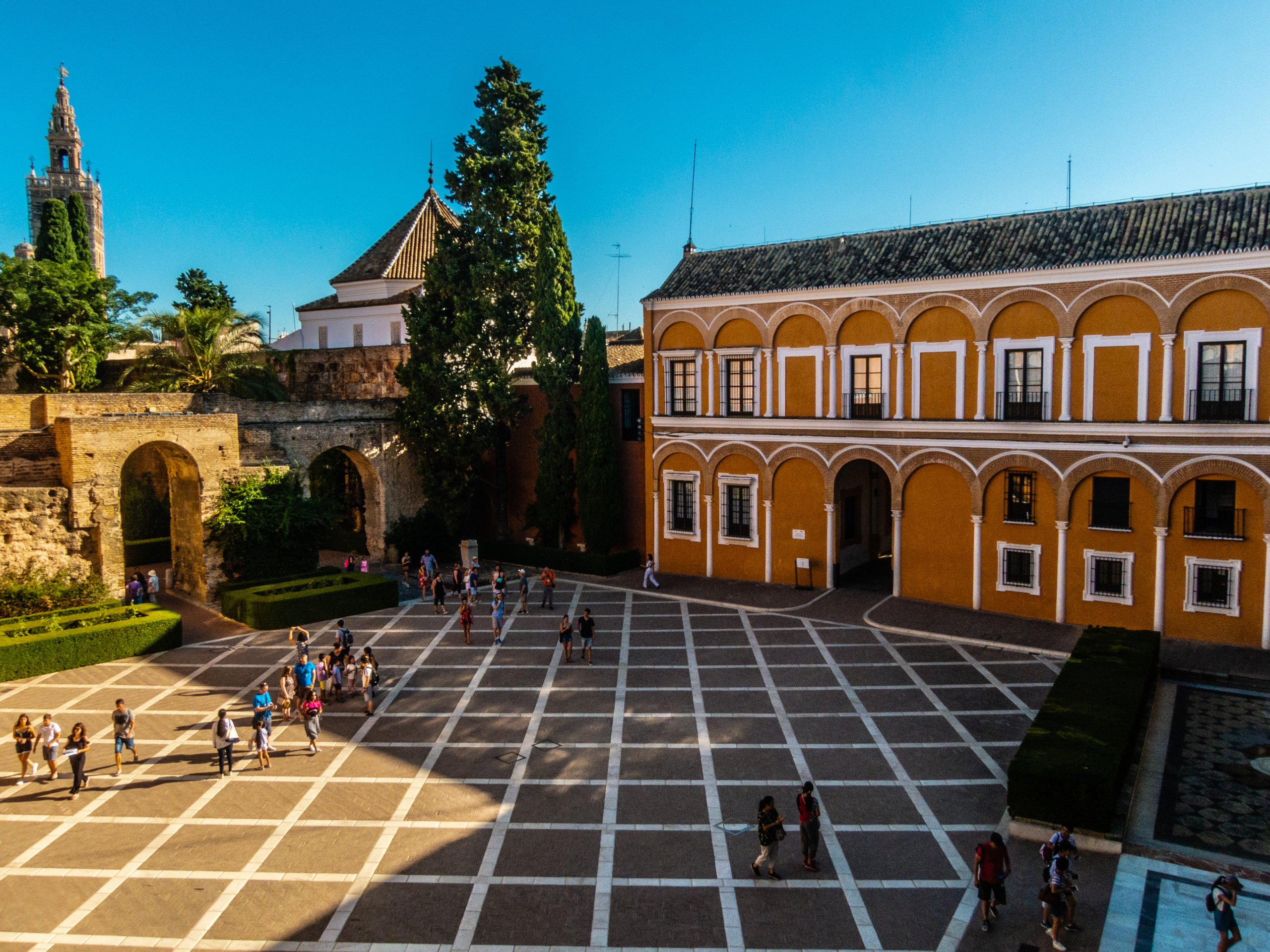
Quick Jumplinks to Navigate
The Royal Alcázar of Seville is an absolute gem in Spain, enthralling visitors with a unique blend of design and and cultural richness. The history of Royal Alcázar of Seville reflects its role as a royal residence and its architectural evolution, making it a key cultural landmark in Spain.
This magnificent palace is adorned with beautiful Mudéjar style that showcases detailed tilework, ornate arches, and lavishly decorated rooms. Each corner of the Royal Alcázar reveals a new layer of beauty, from the lavish courtyards to the vibrant gardens.
The blend of Gothic, Renaissance, and Baroque elements adds to its charm that creates a experiential feast that delights all the senses. The palace’s calming atmosphere and artistic grandeur makes it a must-visit destination for anyone exploring Spain.
The Royal Alcázar of Seville offers an unforgettable experience, whether you’re marveling at the Hall of Ambassadors or strolling through the tranquil gardens. The Royal Alcázar of Seville is a historic marvel that embodies the essence of Spanish elegance and heritage.
Here are Some Important Highlights From The Royal Alcazar of Seville’s History:
1. Detailed Timeline of Royal Alcazar of Seville
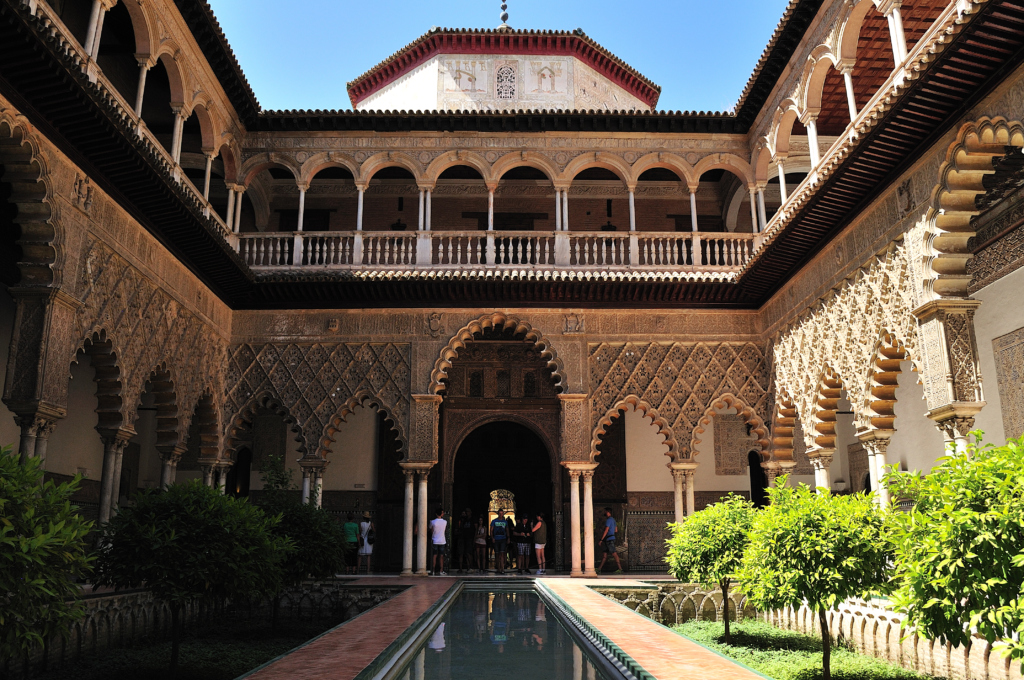
9th Century: The original fort’s construction begins under the Moors, using materials from Roman and Visigothic ruins.
11th Century: The Almohad dynasty expands the fort, adding key defensive structures.
1248: After the Christian reconquest, Ferdinand III converts the fort into a royal palace, maintaining some Islamic architecture.
1364: King Pedro I of Castile orders extensive renovations, introducing intricate Mudejar elements that blend Islamic and Christian styles.
15th Century: Ferdinand and Isabella enhance the palace with Gothic features, including the addition of the Hall of Ambassadors.
16th Century: Charles V integrates Renaissance touches, commissioning Italian artists to decorate the palace.
18th Century: Baroque modifications further embellish the palace, reflecting contemporary tastes and aesthetics.
19th Century: Recognized as a National Monument, ensuring its preservation and marking a significant moment in the Royal Alcázar of Seville history.
1987: Designated a UNESCO World Heritage Site, highlighting its architectural and cultural significance.
Also Checkout & Book: Royal Alcazar Of Seville Tickets
2. Construction Begins (9th – 14th Century)
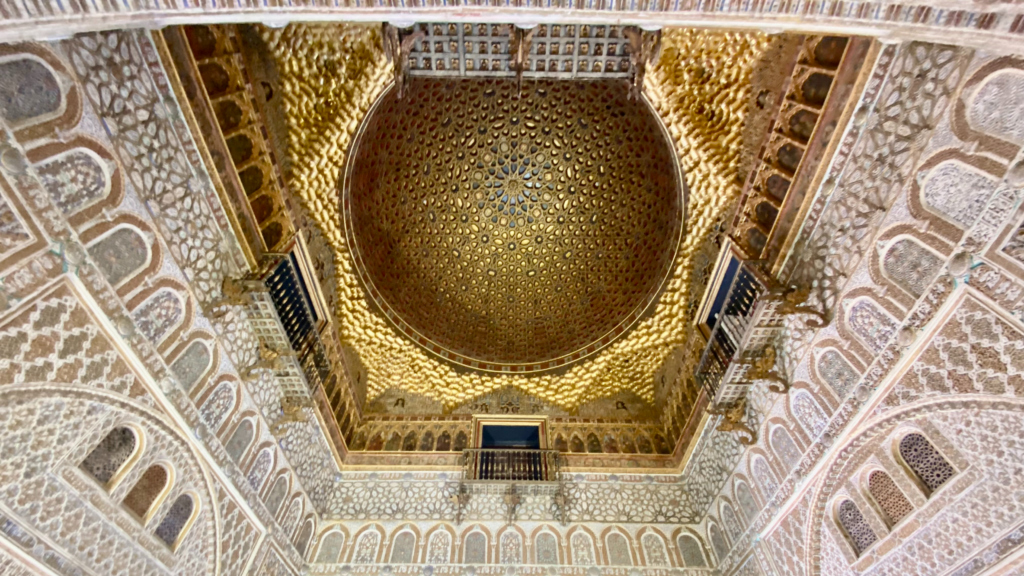
The history of Royal Alcázar of Seville began in the 9th century when it was initially constructed as a fort by the Moors. Over the next few centuries, the fort underwent significant expansions, especially under the Almohad dynasty in the 11th century.
The most notable transformation occurred in 1248 when Christian forces, led by Ferdinand III of Castile, conquered Seville. The Alcázar was then repurposed as a royal palace. In 1364, King Pedro I of Castile commissioned extensive renovations, infusing the palace with the distinctive Mudejar architectural style, which blended Islamic and Christian design elements.
You May Also Book: Seville Tour Packages
3. Renovations and Additions (15th – 18th Century)
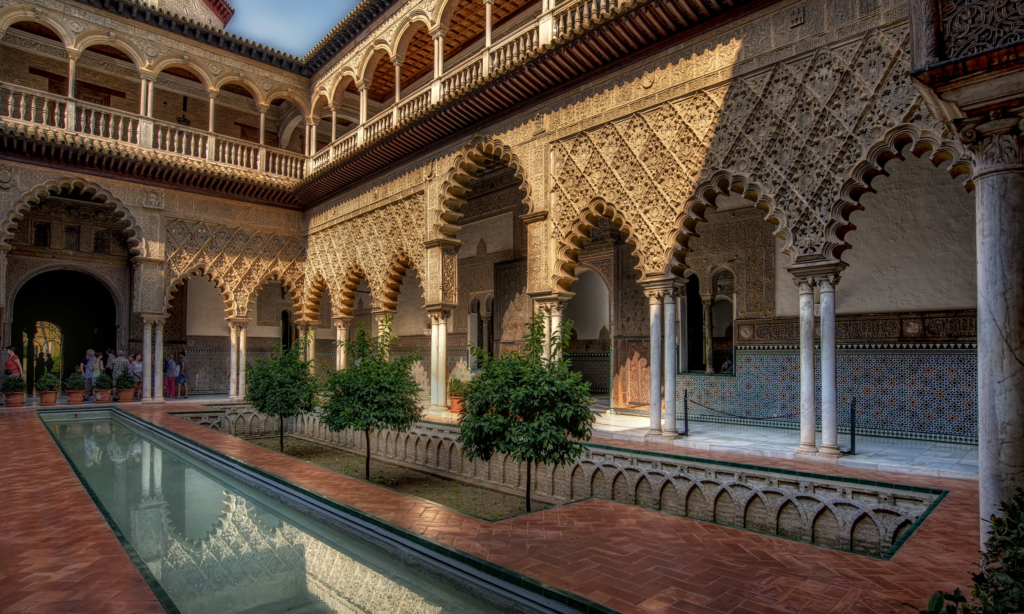
The 15th century saw further developments as the Catholic Monarchs, Ferdinand and Isabella, added their touches to the palace.
During this period, the history of Royal Alcázar of Seville was marked by the introduction of Gothic elements, such as the grand Hall of Ambassadors. In the 16th century, renaissance influences were integrated into the design under the reign of Charles V.
These architectural designs reflected the broader European artistic trends of the time. Italian artists were brought in to enhance the palace’s interiors with detailed frescoes and sculptures. The 18th century brought Baroque modifications, including ornate stucco work and elaborate garden designs.
Planning a trip to Spain? Checkout our Spain Tour Packages Now!
4. Recognition as a National Monument and World Heritage Site (19th – 21st Century)
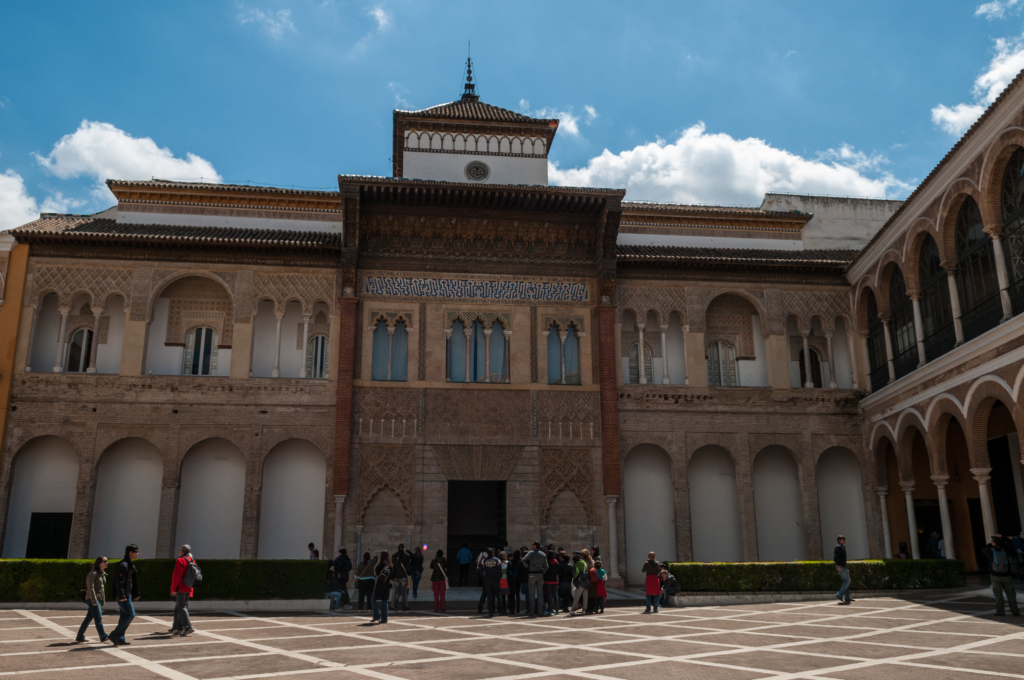
In 1931, the Royal Alcázar of Seville was declared a National Monument, a significant moment in the Royal Alcázar of Seville’s history. This recognition led to meticulous restorations, preserving its Renaissance murals and Gothic ceilings. In 1987, UNESCO designated it a World Heritage Site, highlighting its global cultural importance.
Interestingly, the Alcázar still welcomes the Spanish royal family during their visits to Seville, making it the oldest royal palace in Europe still in use. Recent conservation efforts have focused on its intricate Mudejar plasterwork and historic gardens, ensuring its beauty endures for future generations.
Recommended Read: Places to Visit in Seville
5. The Alcazar up to the Nineteenth Century

In 913, Abd al-Rahman III constructed the initial fort that would become the Royal Alcázar of Seville. After Ferdinand III’s conquest in 1248, it was transformed into a royal palace. King Pedro I introduced Mudejar architecture in the 14th century.
In the 15th century, Ferdinand and Isabella’s enhancements added Gothic features like the Hall of Ambassadors.
Whereas, in the 16th century, Charles V incorporated Renaissance elements, commissioning Italian artists for the work. The 18th century brought Baroque additions, further enriching the palace’s architectural diversity.
Recommended Read: Places to Visit in Spain
6. Alcazar of Seville from the Fifteenth Century to the Present
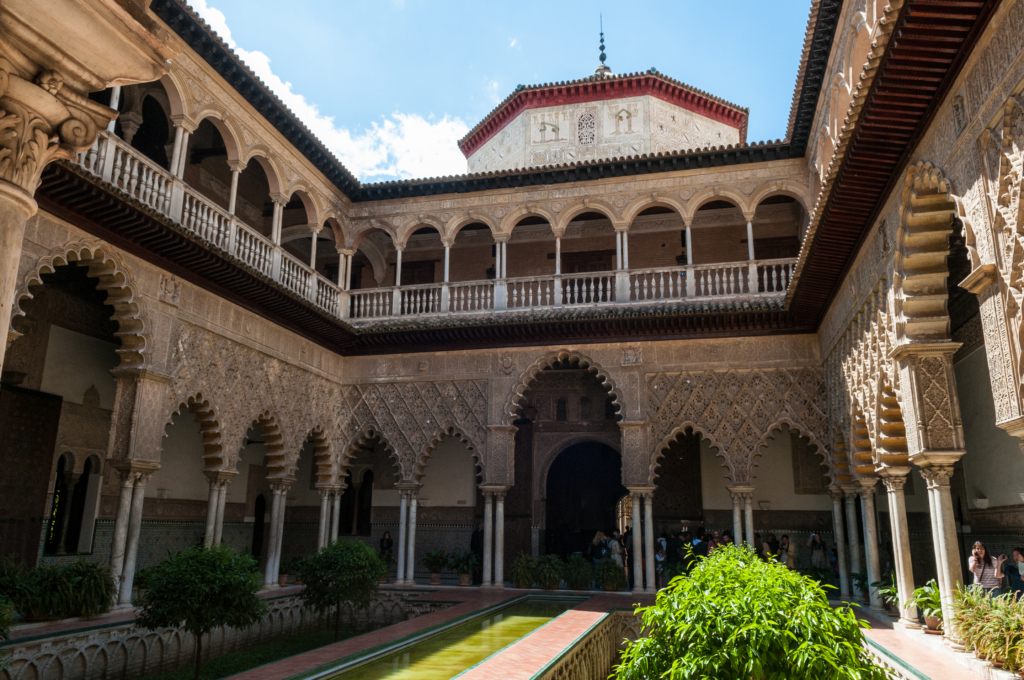
In the 15th century, the Royal Alcázar of Seville history saw the Catholic Monarchs, Ferdinand and Isabella, adding Gothic elements like the stunning Hall of Ambassadors. The 16th century brought Renaissance touches under Charles V, who enlisted Italian artists to adorn the palace with beautiful frescoes.
The 18th century introduced Baroque flair with intricate stucco work and redesigned gardens. Fast forward to the 20th century, the Alcázar was declared a National Monument in 1931, sparking extensive restoration projects. Its designation as a UNESCO World Heritage Site in 1987 cemented its global significance.
Today, the Alcázar not only hosts the Spanish royal family during their visits but also welcomes over 1.8 million visitors each year. Recent conservation efforts at Royal Alcazar focus on preserving its detailed Mudejar plasterwork and lush Renaissance gardens. This will ensure that this historical gem continues to captivate and inspire generations to come
Must Checkout: Things to do in Spain
